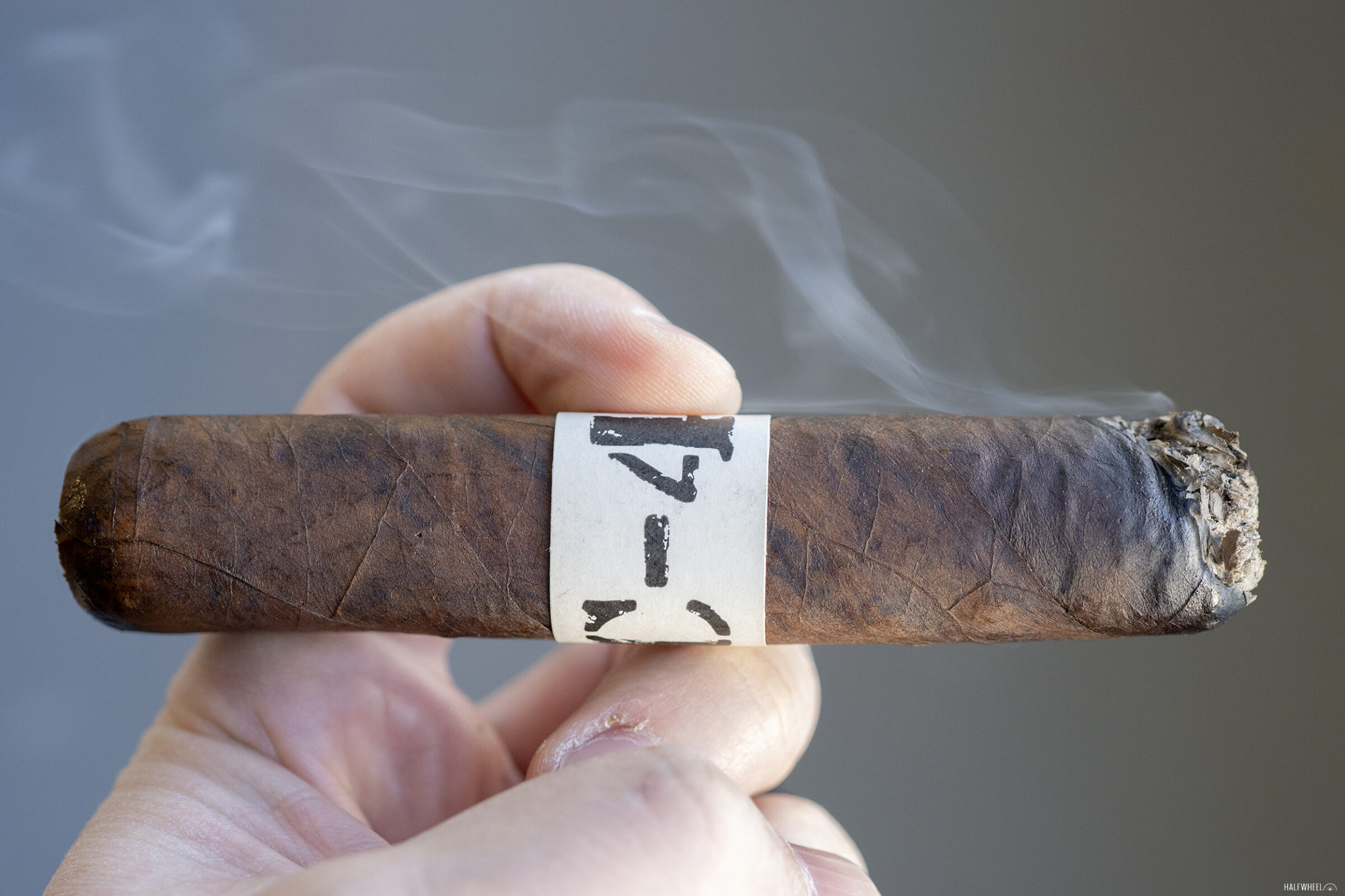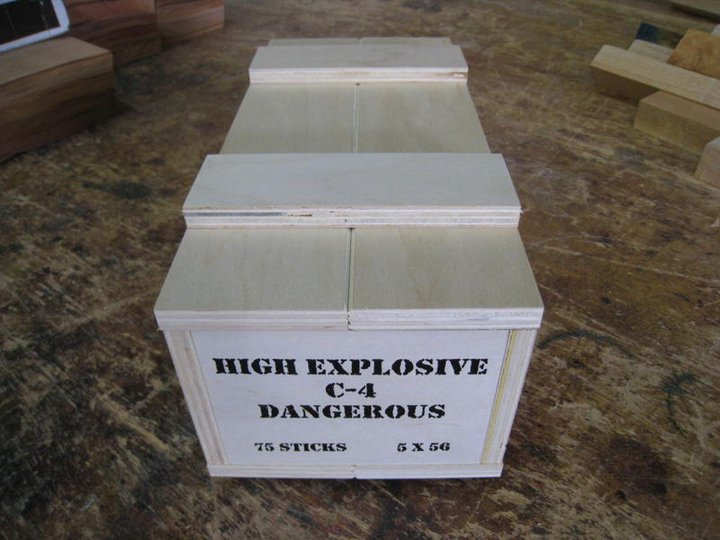At a certain point of struggling to find what cigar to redux, it was just a matter of me pulling out the cigar that had been in the redux box the longest.
That is how this Viaje C-4 became this review. The cigar was released in June 2013, more than a decade ago, and has been sitting in my redux box for almost all of the 3,816 days since it shipped to stores. It was the third C-4 release in the company’s history and, at the time, the third consecutive year the company had released a C-4, a streak that came to an end in 2014.
The C-4 is one of Viaje’s most interesting cigars because it is capped at both ends. Viaje places a small pinhole in the cap, which helps to allow the moisture to leave the inside of the cigar, something that can be an issue on cigars that are capped at both ends. Blend-wise, the 2013 version of C-4 was a Nicaraguan puro, presumably tobacco coming from AGANORSA, rolled at Raíces Cubanas in Honduras.
Here’s what I said when I reviewed the cigar for the first time, all the way back in March 2014:
Recently, Andre Farkas suggested that waiting a bit to smoke Viaje’s cigars would improve their performance. Maybe? I do subscribe to the theory that says if there are inherent problems with the tobacco or roll, waiting won’t improve. There is no question some cigars ship too early and I have no clue if that’s the case with the C-4, because I did not smoke it when it first showed up at the office. I’ve had plenty of Viajes that were great when they first arrived, plenty that didn’t improve with time. Regardless, the C-4 is smoking quite well right now, it’s not the cigar the name suggests, but it’s well worth the price of admission.

- Cigar Reviewed: Viaje C-4 (2013)
- Country of Origin: Honduras
- Factory: Fábrica de Tabacos Raíces Cubanas S. de R.L.
- Wrapper: Nicaragua (Corojo 99)
- Binder: Nicaragua
- Filler: Nicaragua
- Length: 5 Inches
- Ring Gauge: 56
- Vitola: Robusto Gordo
- MSRP: $10.40 (Boxes of 75, $780)
- Release Date: June 20, 2013
- Number of Cigars Released: 150 Boxes of 75 Cigars (11,250 Total Cigars)
- Number of Cigars Smoked For Redux: 1
Just based on appearance, it would be difficult to tell that this cigar is 10 years old. While probably not as white as it once was, the band doesn’t appear particularly faded. Furthermore, the dark wrapper has aged well, retaining some visible oils while avoiding any visible signs of crystallization. The wrapper is dark brown with reds and darker black spots breaking through. Both sides of the cigar have a triple cap with a small pinhole, and while the hole on the top is better-looking and perfectly intact, the one on the bottom is a bit broken. Given that one end is going to get cut off and the other lit on fire, I’m not concerned about how the pinholes look. The aroma from the wrapper reminds me of dry cornbread mix. Underneath, there’s some acidity and leather. It’s soft, smooth and medium-plus. There’s a noise that is made during the cut that gives me a sign that this cigar isn’t as moist as newer cigars, many of which are still drying out as they leave a factory. While the noise is a bit abnormal, the cut itself is clean. The first cold draw has a lot of floral flavors, though subsequent ones have a sweet cinnamon flavor—reminding me of Red Hots candy—that overtakes the floral sensation. While there aren’t many flavors, it’s still medium-full in intensity. For those wondering, the resistance is great.
Given the unique foot, the lighting process takes a lot longer. I use a single flame torch for around five seconds, then I let the cigar cool off for five seconds before applying more fire. I repeat the process four times until I feel like the bottom cap is evenly lit. The first puff is medium-full with leather, muted lime, mineral flavors and black pepper. More than anything, there’s a generic dry tobacco flavor with some acidic accents. Every flavor is muted, though the intensity is still medium-full. This seems to be a clearer example than most of a cigar with flavors that were once quite heavy, but age has muted them. The most intense flavor is rather generic, a mixture of earthiness, tobacco and some bread, all very interwined together. Secondary notes include rock candy, cinnamon, creaminess, dark chocolate and some extremely muted red pepper. During the finish, earthiness and cinnamon are overwhelmed by some muted creaminess that softens everything. Retrohales provide the best example of separation as floral flavors and generic sugar can isolate themselves, but it’s largely the same. During the finish, the sweetness has a melon quality, but then some boiled potato flavor comes and blunts most of the complexity. Flavor is medium-full, body is medium and strength is medium. Construction is a mixed bag; on one hand, the draw and smoke production are both very good. The best feature is that the cigar burns cooler than most. Unfortunately, the burn is a bit of mess. The cigar needs multiple touch-ups to help with both combustion and burn line evenness. And then there’s the ash, amongst the flakiest I’ve experienced in the last two months.

I don’t think that the muting of the flavors means that a cigar will be homogenous or linear from start to finish. That said, it’s quite clear that after more than a decade, the Viaje C-4 probably won’t have many tricks up its sleeves. Cedar picks up slightly in intensity, but the more smoke volume, the more of the base flavors—earthiness, creaminess and wood—dominate the other flavors. Towards the final third, the base flavor adds a very mild white pepper, a notable change. Secondary notes include dry cedar, bread, leather and honey sweetness. The finish is quite similar to the main flavor, though earthiness and herbal flavors are stronger than when the smoke has just left the mouth. With about two inches left, harshness begins to slowly build, though stays fairly mild. Retrohales can have creaminess, some white pepper, mustard, leather, floral flavors, bread and some potato starchiness. Unfortunately, no single retrohale has even half those flavors and they are typically quite mild, often overshadowed by that base flavor. The finish has more saltiness than before, with added amounts of lemon flavors, rock candy, and some stale bottled water. Flavor is medium-full, body is medium-full and strength is medium, though slowly creeping up. Construction is quite similar to the first half: every once in a while, a touch-up is needed to help with combustion or an uneven burn, and the ash is quite flaky. I find the draw to be open, and by the final third, I think that it’s slightly hurting the cigar. Final smoking time was two hours and 30 minutes.
Aging cigars in this manner remains more of an art than a science to me. I think experiences like this highlight the unpredictability. There are still clear signs of a cigar that was once powerful, but it’s so muted that the end result is that the cigar is a shell of itself. That's not a fault of the cigar, that's a consequence of aging. Because of how inconsistent a box of cigars might be—let alone how they are stored—I still feel like we in the cigar world have very little of the guidance that the wine drinkers have about aging their bottles. In the case of this 2013 version of the Viaje C-4, 10 years seems to have been too long. I’ll always leave open the possibility that this particular cigar could have just been in a phase and could show more life in 18 months, but my limited experience of smoking cigars with this much age on them tells me that’s unlikely to be the case.


